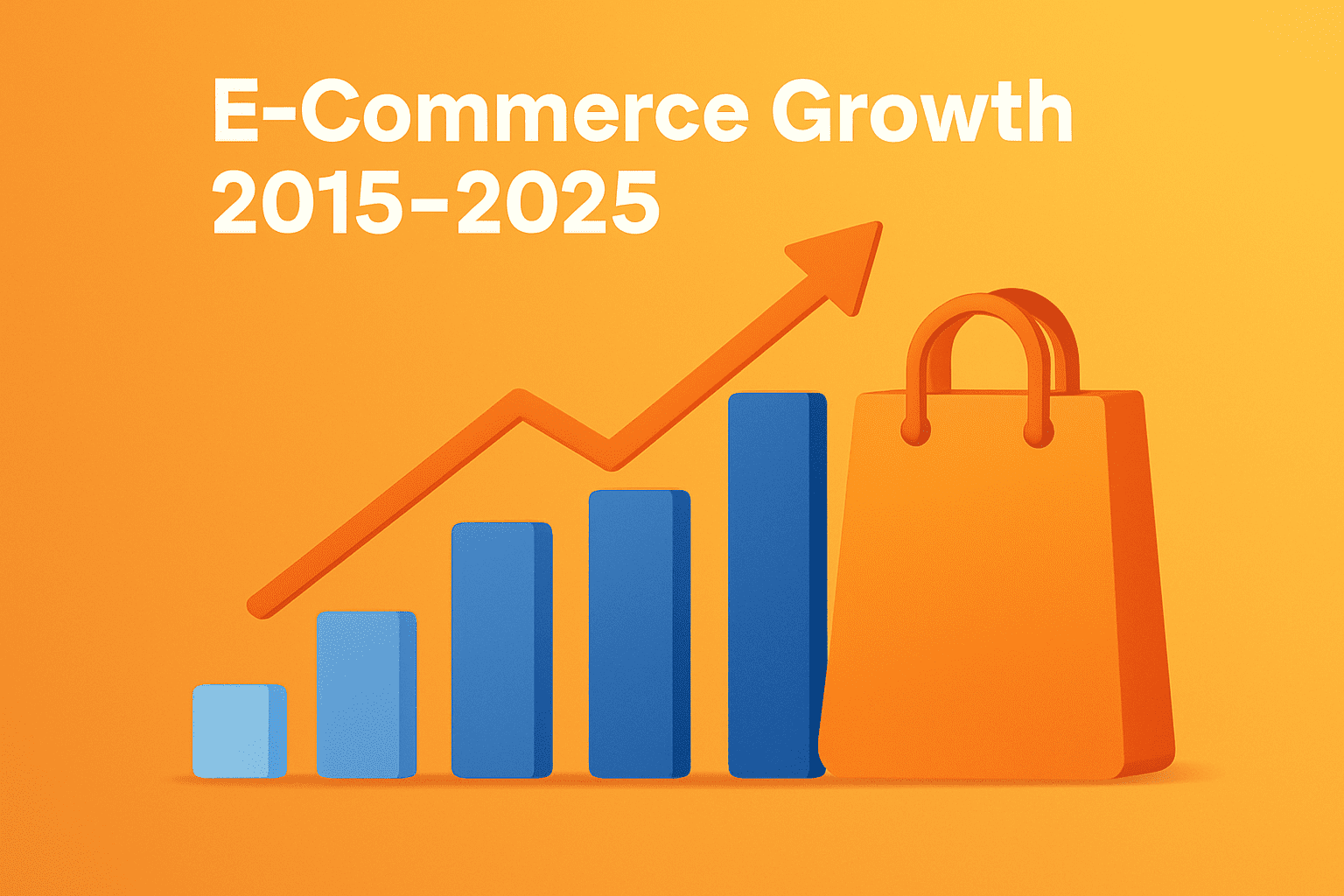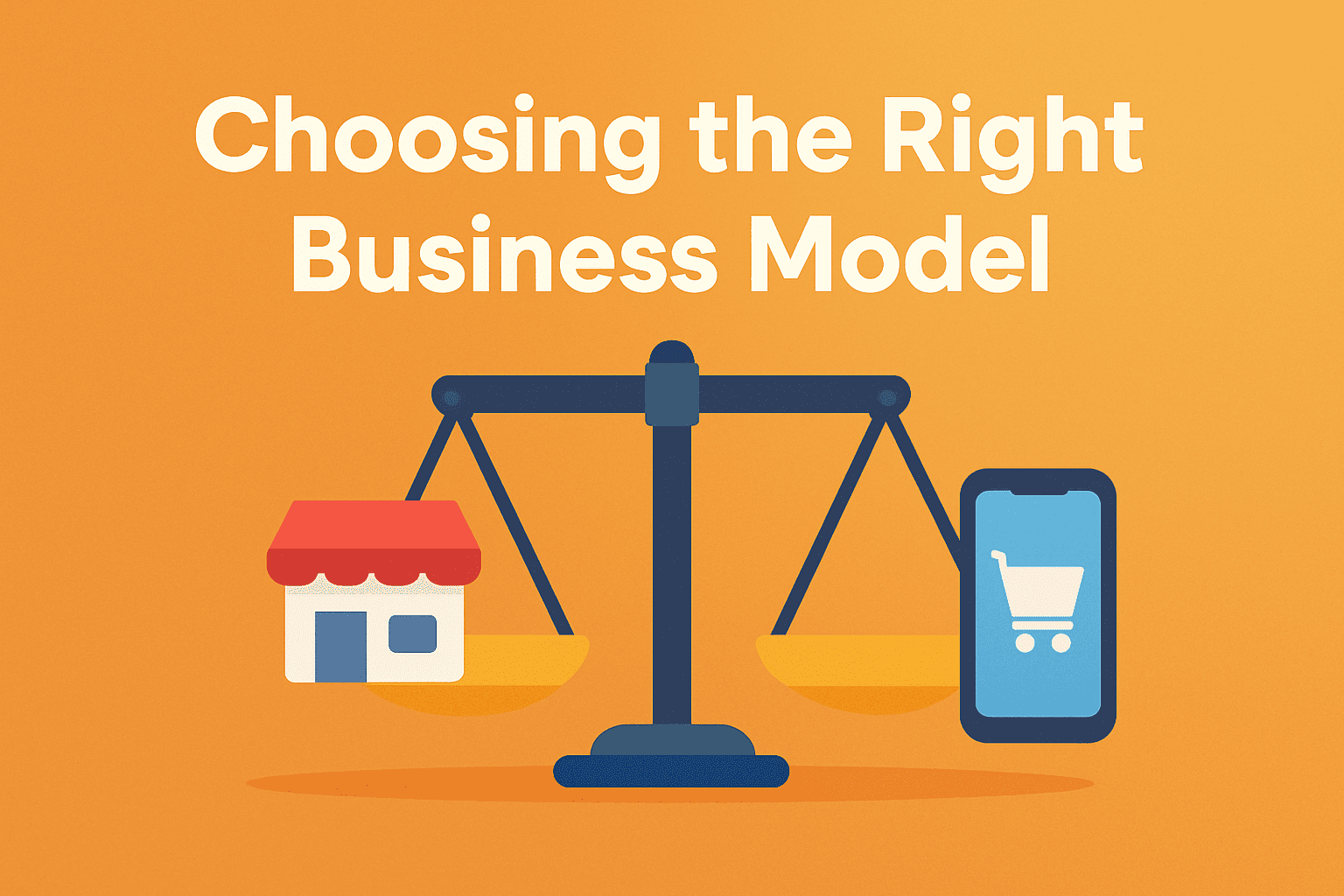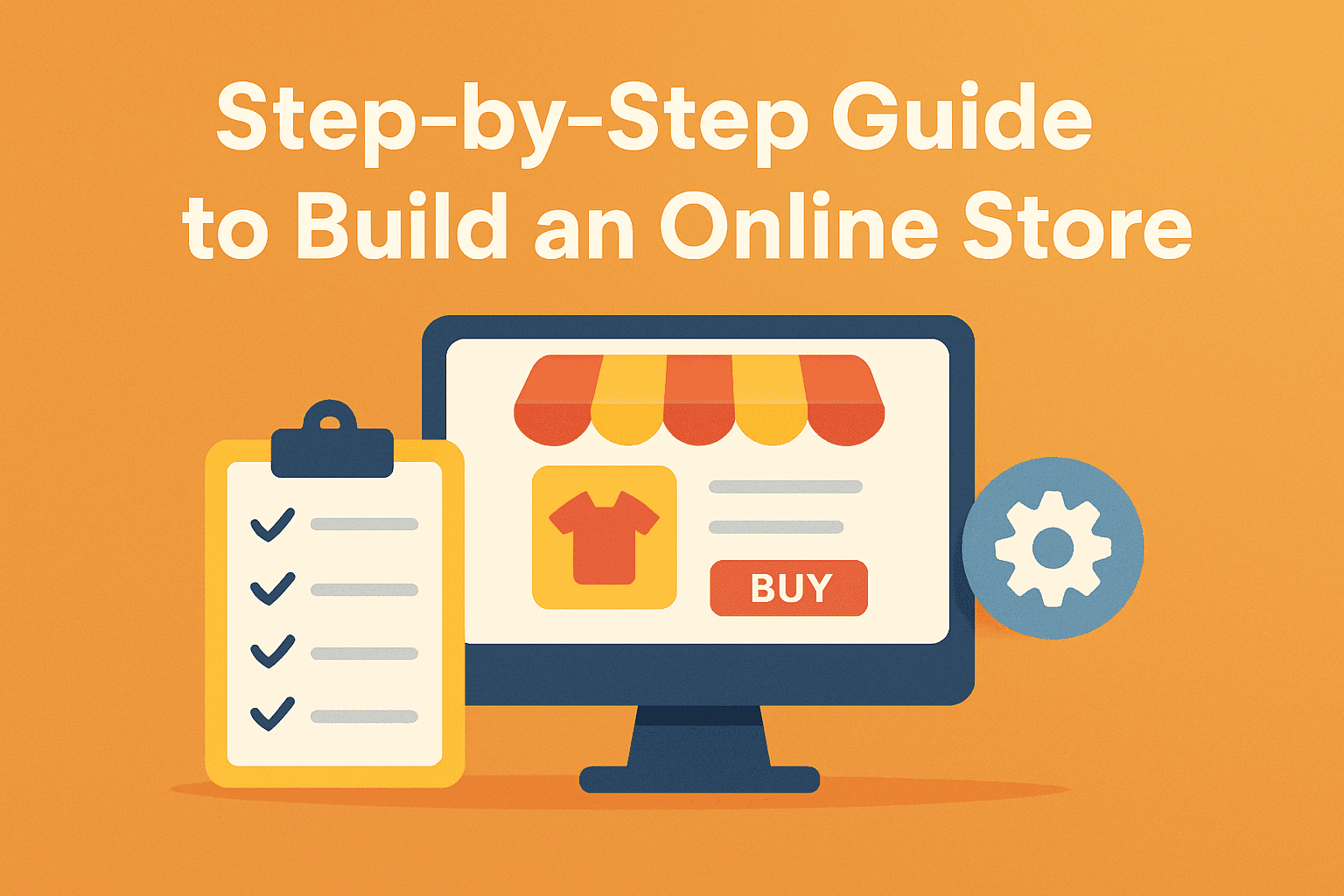The Ultimate Guide to E-Commerce Website Development in 2025
Online shopping has grown from a convenience into a habit that millions rely on every single day. By 2025, almost 1 out of every 5 products people buy worldwide comes from an online store. This shift shows that e-commerce is no longer optional—it’s the backbone of retail.
If you want to launch a new online store or upgrade an old one, this guide will walk you through the essentials. You’ll learn how the market is growing, which platforms are most used, how much development costs, and why custom websites are better for scaling. Most importantly, you’ll discover what’s coming next in the future of online shopping.
E-Commerce Growth 2015–2025

Over the last decade, e-commerce has grown faster than almost any other industry. Shopping that once required a physical store visit is now just a click away. This shift is fueled by mobile adoption, better internet access, and trust in digital payments.
The numbers tell the story clearly—online shopping has multiplied in value and reach, creating massive opportunities for businesses of all sizes. By 2025, e-commerce is not just a retail option, it’s the default way many people prefer to shop.
- In 2015, only 7% of shopping was online
- By 2025, almost 20% of all sales happen online
That means 1 in every 5 purchases worldwide is digital
The Current E-Commerce Market
The global e-commerce market in 2025 is more competitive and dynamic than ever. From small startups to global giants, businesses are fighting for online visibility. Customers now expect quick delivery, personalized service, and a seamless shopping experience across devices.
This has also forced companies to rethink strategies—being online isn’t enough, your website must be fast, secure, and engaging. Those that meet these expectations are growing faster than traditional retailers.
- Global online sales in 2025: $6.4 trillion
- Market growth rate: around 7% per year
- Customer demand: faster delivery, more trust, personalized shopping
Market leaders: Amazon, Shopify, and ONDC (India)
Popular Platforms in 2025
Today, businesses have more choices than ever when selecting a platform to run their online stores. Some platforms are designed for beginners, while others are built for advanced customization and scalability. Choosing the right one depends on your business goals, resources, and target market.
Market share reports show that WooCommerce and Shopify dominate, but other players like Magento and BigCommerce still hold strong positions. Many businesses are also exploring custom-built stores to get more control over features.
- WooCommerce → 20% share (popular with WordPress users)
- Shopify → 10% global, 29% of high-traffic websites
- Magento (Adobe Commerce) → 12%, ideal for larger businesses
- BigCommerce → 3%, strong in multi-channel selling
- Others (OpenCart, Drupal, custom builds, etc.) → 27%
Choosing the Right Business Model

Before you start building your online store, it’s important to pick the right business model. Your model will guide everything—from your website design to how you handle logistics and marketing. Businesses that choose the wrong model often struggle to grow.
Think about your product type, audience, and revenue approach. Do you want to sell directly to customers, supply other businesses, or run a platform for multiple sellers? Each path has its own benefits and challenges.
- B2C (Business to Customer): Sell directly to consumers
- B2B (Business to Business): Bulk sales to companies
- D2C (Direct to Customer): Sell your own brand without middlemen
- Marketplace: Allow multiple sellers (like Amazon, Flipkart)
- Subscription Model: Recurring sales (monthly or yearly)
Why Custom Development is Helpful
While ready-made platforms like Shopify or WooCommerce are good for beginners, custom development unlocks far more growth potential. With custom builds, your store can be tailored to your brand, processes, and future scaling plans.
This means you don’t have to rely on pre-made templates or face limits with plugins. Instead, your website becomes a powerful business tool that grows alongside your company.
- Unique look and feel that matches your brand identity
- Strong SEO performance for better visibility on Google
- Ability to add new features as your business scales
- Seamless integration with payment, CRM, and logistics tools
- Full control over updates, security, and performance
Things to Do Before Building a Website

Jumping straight into development without preparation can be costly. Successful e-commerce projects always start with planning and research. By preparing in advance, you reduce risks, control your budget, and design a store that customers actually want to use.
This stage is about knowing your audience, defining your brand, and setting priorities. Even small steps like testing with a Minimum Viable Product (MVP) can save time and money later.
- Study your customers—who they are, what they like, and how they shop
- Build your brand identity—logo, style, and brand voice
- Start with an MVP before going full-scale
- Create a clear budget to avoid hidden costs
Train your team for sales, customer service, and operations
Step-by-Step Guide to Build an Online Store

Building an online store can feel overwhelming, but breaking it into steps makes it manageable. From choosing the platform to testing and launching, every stage matters. A structured approach ensures fewer mistakes and faster results.
Think of this process as building a house—you start with a foundation, add walls, and finally finish with interiors. Each step builds on the other until your store is ready for customers.
- Choose a platform or a custom tech stack
- Buy a domain name and hosting
- Design a mobile-friendly and simple store
- Add payment gateways and tax settings
- Upload products with professional photos and details
- Test checkout, speed, and overall security
- Launch with marketing integrations
Update and improve regularly
Tech Tools You Need in 2025
Technology is the backbone of modern e-commerce. The tools you choose will determine how smooth, fast, and scalable your store is. In 2025, businesses are using advanced front-end frameworks, robust back-end systems, and cloud hosting to stay competitive.
These tools also help improve customer experience with features like real-time tracking, personalized recommendations, and secure payments. Choosing the right stack ensures your store can grow without breaking.
- Frontend (what users see): React, Next.js, PWAs
- Backend (behind the scenes): Node.js, Django, Laravel
- Database systems: MySQL, MongoDB
- Hosting services: AWS, Azure, Cloudflare
- Payments: UPI, wallets, Buy Now Pay Later (BNPL)
Shipping: Real-time tracking & logistics software
Cost of Building an E-Commerce Website
The cost of building a store depends heavily on your requirements and region. Hiring in the U.S. or Europe costs much more than in Asia, but the quality and expertise also vary. Businesses should carefully balance cost and value.
Custom websites are always more expensive, but they provide long-term flexibility and scalability. Small stores can be built on a budget, while advanced platforms require significant investment.
- Small store: $5K–$15K
- Custom website with advanced features: $30K–$100K+
Hourly developer rates vary globally (from $25/hr in Asia to $100+/hr in the U.S.)
How AI Makes Online Stores Smarter
Artificial Intelligence (AI) is transforming e-commerce by making stores more intelligent and user-focused. From product recommendations to customer support, AI helps businesses deliver personalized experiences.
Stores using AI also save time by automating tasks like product descriptions and inventory management. This makes them more efficient and competitive.
- Personalized product recommendations
- Automated product descriptions
- AI chatbots for customer support
- Visual search tools (“shop the look”)
- AI-driven demand forecasting and stock management
Keeping Your Website Safe and Trusted
Trust is the foundation of online shopping. Without security and transparency, customers will abandon their carts and choose competitors. That’s why keeping your website safe is no longer optional—it’s essential.
Strong data protection, clear policies, and compliance with global laws help build confidence among buyers. A secure store not only protects customers but also strengthens your brand reputation.
- Install SSL certificates for encrypted browsing
- Follow global privacy rules (GDPR, India’s DPDP Act, CCPA in the U.S.)
- Add two-factor authentication for logins
- Make the site accessible to everyone (WCAG 2.2 standards)
Show transparent return and refund policies
The Future of Online Shopping
The next five years of e-commerce will bring innovations that sound futuristic today. From virtual reality shopping to AI assistants making purchases on your behalf, the landscape is evolving rapidly.
Businesses that adopt these innovations early will have a major advantage. Those that ignore them may struggle to survive in a competitive market.
- AI bots shopping for customers automatically
- Blockchain to verify product authenticity
- AR/VR to enable virtual try-on before purchase
- Voice shopping via Alexa, Siri, Google Assistant
E-commerce stores entering the metaverse
Conclusion
E-commerce in 2025 is about more than just launching a website. It’s about building a smart ecosystem that supports your brand and makes shopping easy and trustworthy for your customers.
To succeed, focus on choosing the right platform, using AI tools, ensuring safety, and building trust. When done right, your store becomes a growth engine that drives long-term business success.
